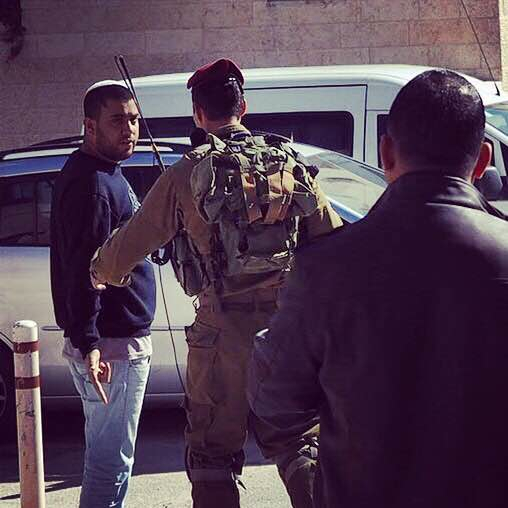Tag: Settlers
-
Extremist settlers hurls abuse at injured ISM activist
26th December | Ally Cohen – originally posted on Mondoweiss | Hebron, Occupied Palestine Hebron, Palestine, December 24th. As we made our way to ‘checkpoint watch’ we were discussing what it would be like that morning, would there be tear gas? Stun grenades? Child arrests? Every day children are forced to walk through military checkpoints, manned with armed…
-
Armed settler invades schoolyard in Hebron
20th November 2014 | International Solidarity Movement, Khalil team | Hebron, Occupied Palestine Yesterday, at approximately 11:00 in al-Khalil (Hebron) a settler from a nearby illegal settlement approached the Qurtuba school in H2 with a gun [H2 is the area of Hebron under Israeli military civil and security control]. The settler entered the school grounds, terrifying the…
-
Israeli forces ignore settler attacking child
9th November 2014 | International Solidarity Movement, Khalil Team | Hebron, Occupied Palestine This afternoon in al-Khalil (Hebron), ISM activists witnessed a Zionist settler push a 10-year-old child to the ground. The settler was driving close to Salaymeh checkpoint, through a group of Palestinian schoolchildren walking home. He suddenly stopped, exited his car, and violently pushed…



